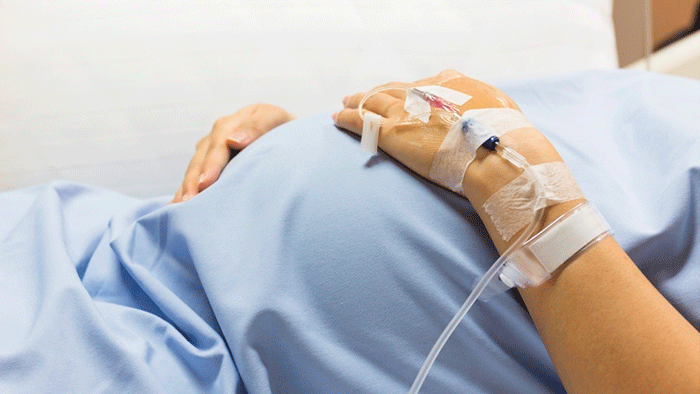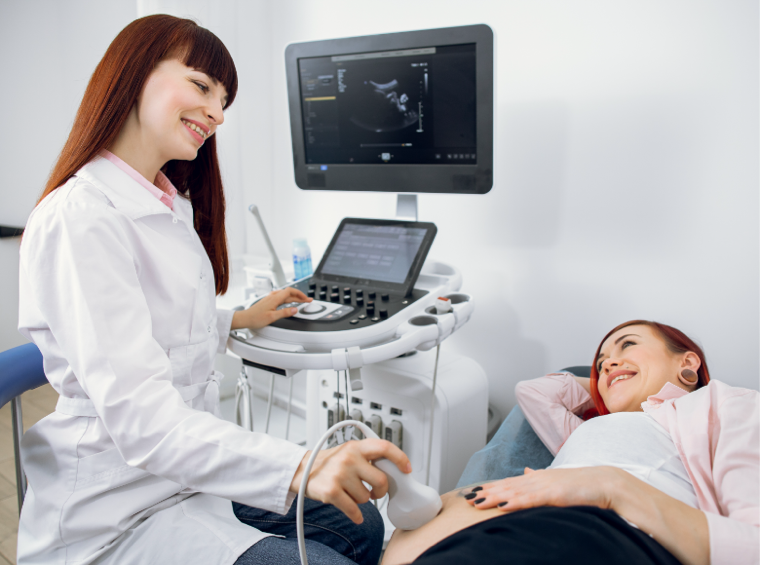Immunohematology and Hemolytic Disease of the Fetus and Newborn (HDFN)

Hemolytic disease of the fetus and newborn (HDFN) is a potentially life-threatening condition that results in the destruction of fetal or newborn red blood cells (RBC) by maternal RBC alloantibodies. These antibodies are developed against paternally derived RBC antigens present on fetal RBCs through fetal/maternal hemorrhage during pregnancy/delivery or via intrauterine transfusions (IUT). The antibodies pass through the placenta into the fetal circulation resulting in fetal anemia, fetal hydrops, and potentially perinatal death, if left untreated. Immunohematology studies during pregnancy can help identify antibodies that may cause HDFN so that interventions can be implemented to diagnose and treat this condition.

Maternal Alloantibodies and HDFN
HDFN can be caused by maternal alloantibodies against ABO or other RBC antigens. Before the introduction of effective prevention and management strategies, RhD-HDFN was the most common cause of HDFN, with 50% of affected pregnancies resulting in still birth or neonatal death. Antibodies against other Rhesus antigens (e.g. c, E) or other blood group antigens, such as those in the Kell, Duffy, Kidd and MNS blood groups, may also contribute to prolonged anemia. The prevalence of clinically-significant RBC alloantibodies ranges from 0.5 to 4% in the general population.
Immunohematology to Detect HDFN
RBC alloantibodies are detected through an antibody screen using either manual tube testing or automated testing methods such gel column agglutination (gel card) or solid-phase (microplate) systems. A positive antibody screen will trigger further investigations, including performing an antibody titer, to determine the risk of clinically significant HDFN. The fetus will be closely monitored for anemia and several treatment options such as early delivery or IUT are available.

HDFN Prevention and Management Strategies
HDFN caused by anti-D can be prevented through injection of anti-RhD immunoglobulin (RhIg) that is derived from pooled human plasma of individuals naturally or intentionally immunized to the D antigen. The American College of Obstetricians and Gynecologists recommend the first dose of RhIg be given to RhD-negative women at 28 weeks of gestation where the vast majority of women (95%) will develop antibodies. A second dose is given within 72 hours of the birth of a RhD-positive baby. It is estimated that in high income countries these measures have reduced the burden of Rh-HDFN disease by about 95% over the past 52 years. However, Rh-HDFN still remains a leading cause of severe HDFN world-wide.

References
Gupta GK, Balbuena-Merle R, Hendrickson JE, Tormey CA. Immunohematologic aspects of alloimmunization and alloantibody detection: A focus on pregnancy and hemolytic disease of the fetus and newborn. Transfusion and Apheresis Science 2000; 59(5): 102946.PUBMED Link.
Cohn CS, Delaney M, Johnson ST, Katz LM. Technical Manual 20thEdition, Chapter 23, 2020.
Moinuddin I, Fletcher C, Millward P. Prevalence and specificity of clinically significant red cell alloantibodies in pregnant women - a study from a tertiary care hospital in Southeast Michigan. J Blood Med. 2019; 10: 283-289.PUBMED Link.
Jackson ME, Baker JM. Hemolytic Disease of the Fetus and Newborn: Historical and Current State. Clin Lab Med 2021; 41, 133-151.PUBMED Link.